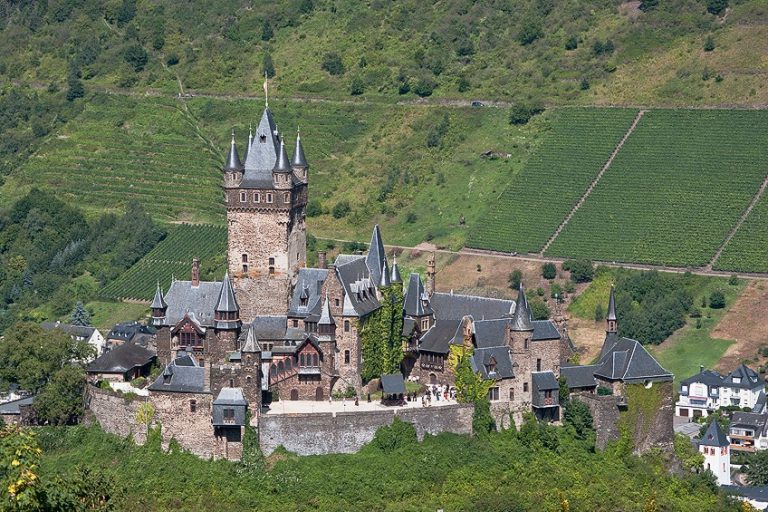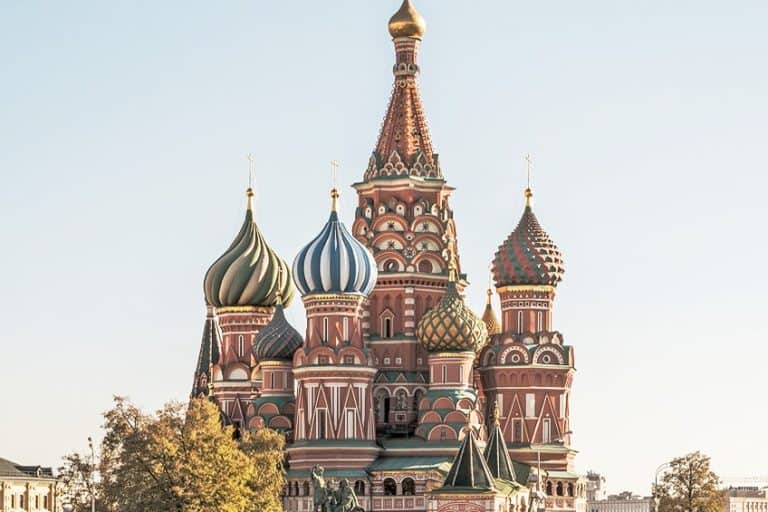International Commerce Centre in Hong Kong – The ICC Tower
When the ICC Tower (International Commerce Center in Hong Kong), was completed in 2010, it became the world’s fourth tallest building, as well as the tallest building in Hong Kong. Today, it is ranked the 13th tallest building in the world based on overall height, and 10th based on the number of floors. The ICC Tower includes the Sky100 observation deck, as well as the Ritz-Carlton Hong Kong.
Exploring the International Commerce Center in Hong Kong
| Architect | Kohn Pedersen Fox (est. 1976) |
| Date Completed | 2010 |
| Height (meters) | 484 |
| Function | Hotel and commercial offices |
| Location | West Kowloon, Hong Kong, China |
The International Commerce center in Hong Kong faces the next highest building in Hong Kong, the IFC (International Finance Center). It was developed by Hong Kong’s largest property developer and train operator, Sun Hung Kai Properties, along with MTR Corporation. Previously known as Union Square Phase 7, its present name was unveiled in 2005.

Development of the ICC Tower
The ICC Tower was built in stages between 2007 and 2010. The Ritz-Carlton opened in late March 2011, followed by the observation deck in early April. The height of the building had been reduced from the original designs due to restrictions that prohibited structures from being taller than the nearby mountains. The initial plan for this skyscraper was 574 meters tall, rising 162 meters over the tallest building in Hong Kong at the time, the IFC Tower.
Kohn Pedersen Fox was the architectural firm from the United States that designed the building in collaboration with Wong & Ouyang.
On the 13th of September, 2009, a tragic incident occurred when a lift shaft accident killed six workers and wounded several more. The incident prompted a brief halt in construction and raised questions about the construction safety measures put in place at the site. An investigation was carried out to discover the cause of the incident and to guarantee that the required measures were implemented to avoid such accidents in the future. The construction was completed on the 3rd of May 2010 and opened in 2011.

Reception to the International Commerce Center in Hong Kong
Despite the tragic loss of lives from the lift shaft incident, the tower was generally well-received when it opened to the public. The sleek and futuristic architecture of the skyscraper has been lauded for its impact on Kowloon’s skyline, and it stands as a symbol of Hong Kong’s position as a major global financial hub.
While many have commended the ICC Tower’s elegant and futuristic design, some claim that the structure is too big and does not belong in the city as it detracts from the city’s existing architecture.
Some also believe that the construction of the ICC Tower has led to increasing property prices and gentrification in the immediate vicinity, displacing long-term residents. It is a big and energy-intensive structure, and some detractors have expressed reservations about its impacts on the environment and energy usage. Several have questioned the government’s decision to approve the construction of such a massive skyscraper, alleging that it violates sustainable urban planning guidelines.
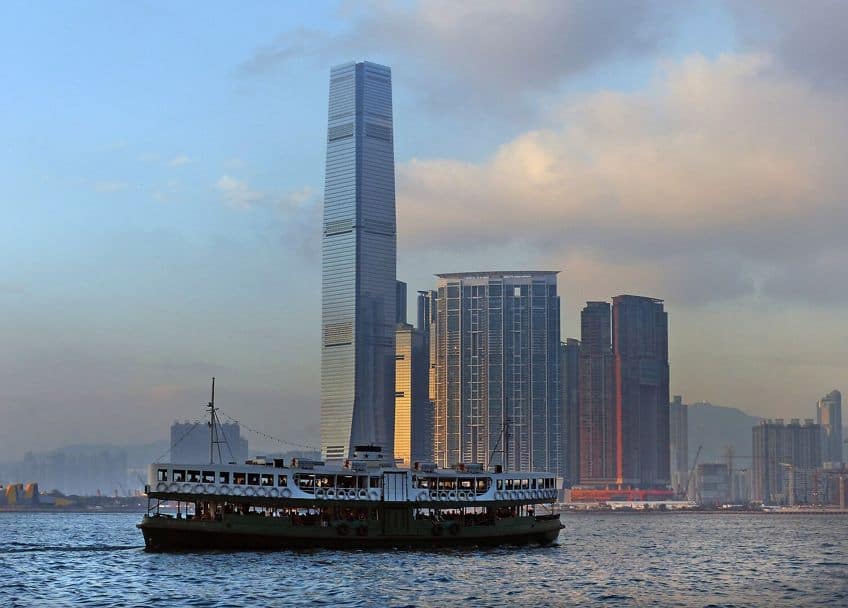
Occupants and Features
The building is a mixed-use facility and features a shopping mall, restaurants, a hotel, and an observation deck. At the building’s base is the Elements shopping mall. It features Hong Kong’s largest cinema complex, an ice rink, and 123 various retail outlets. The mall is called Elements because there are various zones of the mall that feature distinct designs based on the five elements found in nature. There are even large sculptures in every zone that embody the associated element. Floors 102 to 118 of the building are occupied by the Ritz-Carlton, Hong Kong, and offer 312 rooms in total. On the 118th floor, one can find Ozone, the hotel’s bar, as well as a pool, both of which are ranked as the highest in the world.
The hotel was previously located in the central business district of Hong Kong before relocating to the ICC Tower in 2011.
There are also three restaurants in the building, including a cafe, a Chinese restaurant, and an Italian restaurant. On the 100th floor of the building is the Sky100 observation deck. The observation deck offers visitors 360-degree views of the Kowloon Peninsula, Victoria Harbor, and Hong Kong Island. It takes only one minute for the high-speed elevators to travel from the ground floor to the observation deck. The facility also includes a photo booth, augmented reality photos, and a virtual reality experience. The observation received its name after a competition was held and the winning name was selected in May 2010 out of more than 3,000 entries.
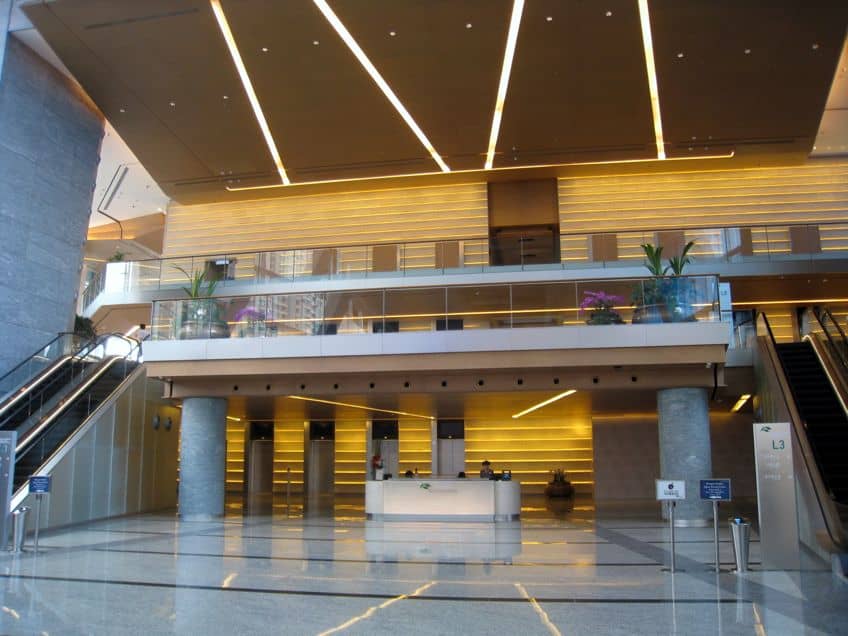
The Architecture of the ICC Tower
Numerous elements had to be considered in order to maximize structural loads, floor plate area, and vertical circulation, as well as meet budgetary constraints. Several designs were explored to harmonize structural and floor plate space, including a circular design, which was most effective at lowering wind loading but was unpopular with potential tenants who preferred square floor plates. Wind loads on rigid square shapes, however, perform pretty poorly and would necessitate significantly more material, leading to greater construction costs.
The building was able to function similarly to the original circular plan thanks to wind tunnel research and a minor alteration to the square plan in the form of notched corners.
A shingle-style exterior outlines the tower’s slight curve and is accentuated at the base, providing canopies that shield residents from wind downdrafts along the composite curtain wall. The most spectacular entrance, dubbed the “Dragon Tail”, extends from the vertical plane and runs down the horizontal plane, ending in a 12-meter drop into the station plaza. The ICC Tower is equipped with advanced environmental control systems. The shimmering effect of the glass is due to its silver coating, which scatters the heat-generating wavelengths of sunlight while still allowing visible light penetration.
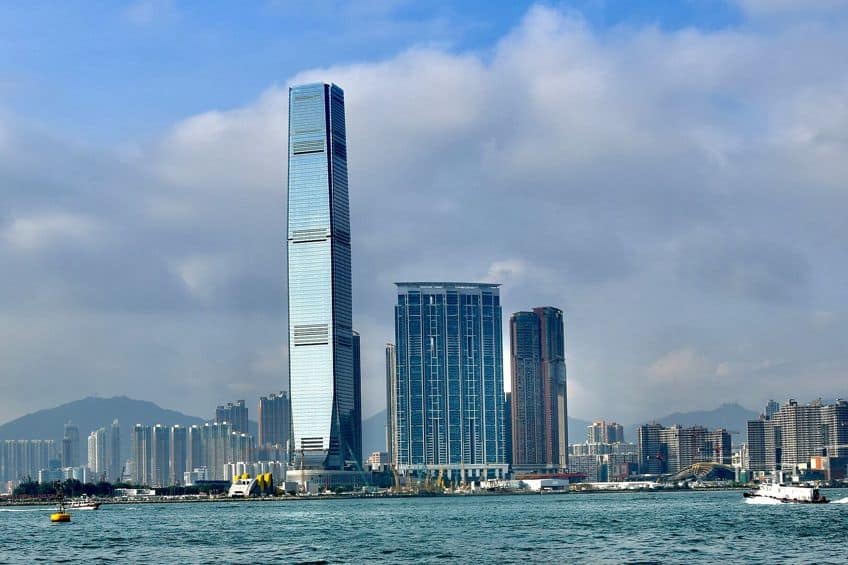
The facade system’s shingled effect also serves as self-shading. The building’s Integrated sensors monitor energy use for night/day and seasonal fluctuations, which provide a base reference for managing systems to decrease energy consumption. The International Commerce Center in Hong Kong is the first structure to be installed with this innovative technology, which is expected to lower total energy consumption by 15% when compared to standard office types. The ICC Tower’s vertical city programming acts as an encouraging exemplar for the development of high-rise densification, serving as an iconic example of the growing city.
The ICC Tower in West Kowloon, Hong Kong, is one of the world’s tallest skyscrapers and is symbolic of the city’s role as a globally recognized financial center. The vast amount of office space in the tallest building in Hong Kong makes it a magnet for multinational enterprises and financial institutions. The International Commerce Center in Hong Kong has multiple floors of retail space, including upscale restaurants and stores, making it a popular shopping and dining destination. It comprises a luxury hotel with breathtaking views of the city and access to its various facilities, as well as an observation deck with views of Hong Kong and the surrounding environment. Its sleek and contemporary architecture, as well as its excellent location and world-class amenities, make it an appealing place for residents to stay and tourists to visit!
Frequently Asked Questions
What Is the Tallest Building in Hong Kong?
Hong Kong’s tallest building is said to be the International Commerce Center in West Kowloon. It has 108 floors above ground and reaches a height of 484 meters. It faces the second tallest building in Hong Kong, the International Finance Center, which is 415 meters in height. The ICC is also ranked as the world’s 13th-tallest skyscraper currently.
Why Was the ICC Tower Built?
The government hoped that the ICC Tower would contribute to Hong Kong’s status as a vibrant and prosperous city, drawing companies and visitors from all over the world. They regarded the construction of the tower as a means of strengthening the city’s economy, generating employment, and attracting international investment. It was also intended to accommodate the city’s expanding need for retail and office facilities, in addition to hotel accommodations.
Were There Any Incidences During the Construction Phase of the ICC Tower?
Unfortunately, there was one serious incident that occurred during the construction phase of the International Commerce Center in Hong Kong. The incident occurred when a piece of scaffolding collapsed in the lift shaft of the building, which led to six workers falling to their deaths. Following the incident, the government began an inquiry into the causes of the collapse, and numerous people and corporations were found to have breached safety regulations. The lift shaft tragedy was a devastating and depressing reminder of the risks that construction crews encounter, and it acted as a wake-up call, and better safety precautions were implemented to prevent something similar from happening again. After a period of mourning out of respect for those who had lost their lives, as well as a comprehensive safety evaluation, construction on the ICC Tower continued, and the project was finally completed in 2010.
Justin van Huyssteen is a freelance writer, novelist, and academic originally from Cape Town, South Africa. At present, he has a bachelor’s degree in English and literary theory and an honor’s degree in literary theory. He is currently working towards his master’s degree in literary theory with a focus on animal studies, critical theory, and semiotics within literature. As a novelist and freelancer, he often writes under the pen name L.C. Lupus.
Justin’s preferred literary movements include modern and postmodern literature with literary fiction and genre fiction like sci-fi, post-apocalyptic, and horror being of particular interest. His academia extends to his interest in prose and narratology. He enjoys analyzing a variety of mediums through a literary lens, such as graphic novels, film, and video games.
Justin is working for artincontext.org as an author and content writer since 2022. He is responsible for all blog posts about architecture, literature and poetry.
Learn more about Justin van Huyssteen and the Art in Context Team.
Cite this Article
Justin, van Huyssteen, “International Commerce Centre in Hong Kong – The ICC Tower.” Art in Context. June 28, 2023. URL: https://artincontext.org/international-commerce-centre-in-hong-kong/
van Huyssteen, J. (2023, 28 June). International Commerce Centre in Hong Kong – The ICC Tower. Art in Context. https://artincontext.org/international-commerce-centre-in-hong-kong/
van Huyssteen, Justin. “International Commerce Centre in Hong Kong – The ICC Tower.” Art in Context, June 28, 2023. https://artincontext.org/international-commerce-centre-in-hong-kong/.





